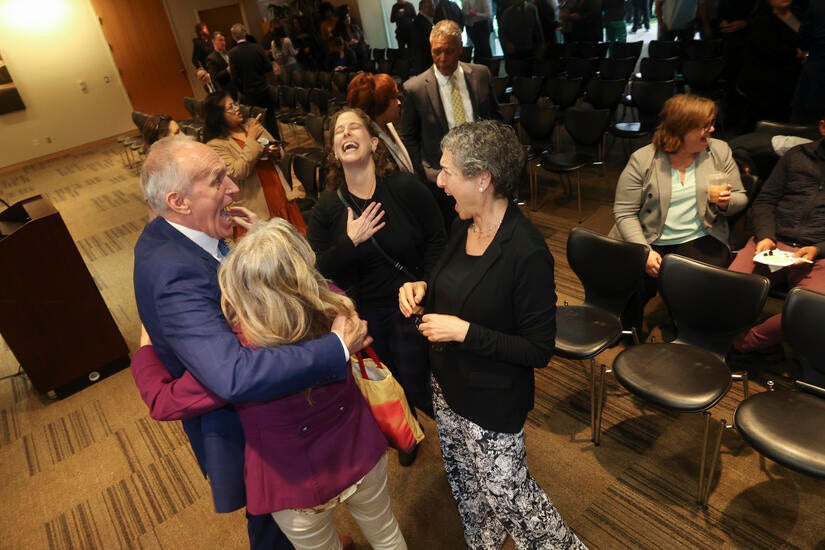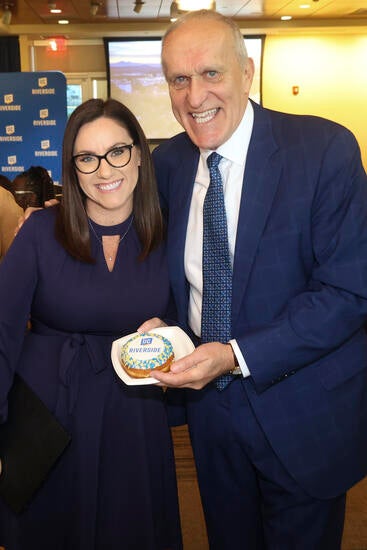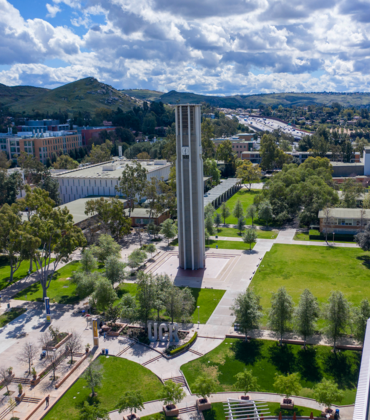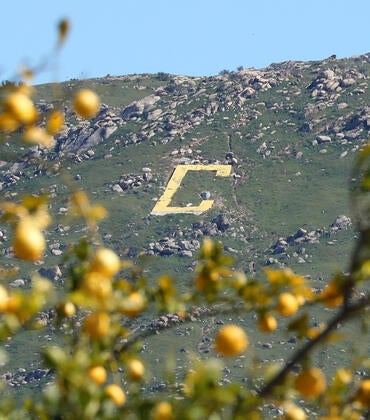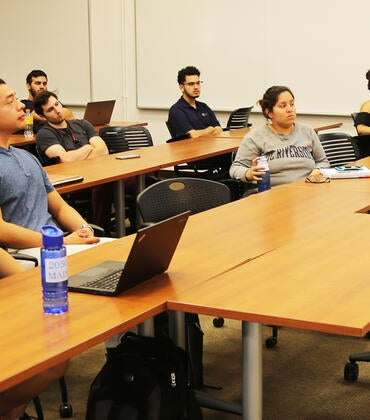
There’s been an electric charge coursing through campus since the June 1 announcement that UC Riverside has been asked to join the prestigious Association of American Universities, or AAU.
There’s also an undercurrent of “What is the AAU?” and its cousin, “What does it mean for UCR?”
June 1, the AAU announced UC Riverside and five other universities will be in its first new cohort since 2019. Effective July 1, AAU includes 71 universities comprising the top research universities in North America, including private institutions like Harvard and Stanford, and public universities such as The Ohio State University, and UC sister campuses including Berkeley and UCLA.
Universities like UCR will spend years trying to meet AAU standards, drawing attention to the scope of their research enterprise in the hope of becoming part of the AAU network.
“The big takeaway is, we are perceived as the gold standard of research universities,” said Pedro Ribeiro, AAU’s senior vice president for communications. As of the June 1 announcement, AAU members accounted for almost 60% of federal funds for academic research.
Gloria S. Waters, vice president and associate provost for research at Boston University, said research dollars have doubled since the university joined the AAU in 2012. In part she attributes the increase to “the increased prestige associated with being a part of the AAU.”
But the benefits transcend prestige. Those connected to AAUs agree the greatest benefit is the information and resource-sharing AAU facilitates among members.
There are two primary ways this happens, according to Ribeiro. The first is on Capitol Hill; AAU has a robust lobbying presence in DC. Ribeiro said AAU sets up meetings for chancellors and presidents with legislators. AAU staff prepare position papers on higher education-related legislation.
“The greatest benefit has been the opportunity to receive AAU guidance on compliance and funding issues,” said Dean R. Madden, vice provost for research at Dartmouth College, which joined the AAU in 2019. “The information we have received, e.g., about shifting research security requirements or CHIPS and Science (Act) funding has been enormously helpful.”
The second is collaborations — email threads, phone and Zoom conversations, and in-person meetings that are transactional in nature. These include AAU-only meetings among provosts, who meet regularly. University government relations officers meet monthly. So do the university general counsels and communicators. The chief research officers meet to discuss topics including federal bureaucracy, industry, and foundation founding.
Madden said AAU serves as “a forum to discuss all kinds of issues with our AAU peers, both formally and informally.”
“There are groups outside of AAU. They are typically much larger; there are thousands of people,” Ribeiro said. “But these are your peers — your real peers.”
Through AAU, members will form commissions and committees to look at issues on campus, such as COVID-19, campus policing, and sexual assault. “If you have a UC Riverside and a Harvard, a UC Irvine and a University of Texas all saying we have this issue, we can take a look at it,” Ribeiro said.
“People in these roles across the different universities work very closely together on major issues,” said Waters of Boston University. “It is a great way to find out what other universities are doing, to discuss trends, best practices, etc. I now have a group of more than 65 colleagues that I can call upon to compare notes.”
Ruth Watkins, who was University of Utah’s president when it was invited to join the AAU in 2019, said information sharing was crucial during COVID-19.
Watkins said AAU “provides access to a remarkable network of scholars and leaders, supporting continued advancement in the institution in so many ways — e.g., recruitment of talent, invitations to speak and participate in a range of national initiatives, opportunities to join research collaborations across institutions.”
AAU membership offers “many opportunities to continue an upward trajectory of impact for the institution and the communities it serves through new, expanded opportunities and networks — without diminishing the value and importance of those who have been with you all along,” said Watkins, referencing higher education national professional associations of which UCR is a member, such as the Association of Public and Land-Grant Universities, or APLU, and the American Council on Education, or ACE.
The University of Utah followed a similar trajectory to AAU membership as UCR. That is, the university undertook a concentrated, years-long effort to hoist its numbers to meet AAU’s threshold. From 2012 to 2019, the University of Utah’s federal research dollars almost doubled. At UC Riverside, federal research dollars increased from $132 million at the start of Chancellor Kim Wilcox’s tenure in 2013 to almost $200 million today.
Rodolfo Torres, UCR’s vice chancellor of Research and Economic Development, expects AAU membership may lead to greater-yet federal investment in UCR research. “There is no doubt that it is a seal of excellence, and it does play a role emphasizing our level in research,” he said.
Torres offers an insider’s perspective, having come to UC Riverside in 2019 from an AAU school, the University of Kansas. Torres pointed to faculty recruitment and international partnerships and recruitment as additional AAU benefits.
“It is a great distinction for hiring and retaining faculty and higher-level administrators; many people only want to be at AAU universities,” he said. “Internationally, institutions of higher education, companies, and even foreign governments that want to work with American universities want to do so with the top elite ones. Being an AAU makes us more attractive for those collaborations, and helps us attract international students.”
Torres said the invitation to join AAU is a validation of UC Riverside’s mission.
“We have demonstrated time and time again that we can be excellent in research, scholarly work, and creative activities, and at the same time be diverse, inclusive and promote social mobility, while engaging with our community and contributing to the health and economic development of our region,” Torres said. “We had many distinctions that recognize the latter and now we have the best one to recognize the former.”
